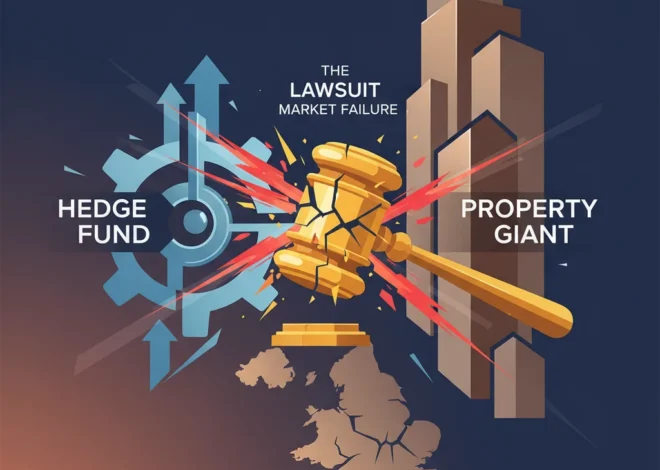
The £1 Million ISA: Decoding the Investment Playbook of the UK’s 5,000 Tax-Free Millionaires
The Dawn of a New Financial Elite
In the world of personal finance, reaching the seven-figure milestone is a significant achievement. But achieving it within a tax-free wrapper? That’s the holy grail. A new report has illuminated a burgeoning and exclusive club within the UK’s investment landscape: the ISA millionaires. The number of investors holding over £1 million in their Individual Savings Accounts (ISAs) has now surpassed 5,000, a remarkable testament to the power of disciplined, long-term investing. According to an investigation by the Financial Times, this figure represents a staggering 45% increase from the previous year, signaling a pivotal moment in private wealth creation.
This isn’t a story of overnight success fueled by high-risk trading or speculative ventures. Instead, the journey to becoming an ISA millionaire is a masterclass in patience, strategic allocation, and leveraging the powerful mechanics of the financial system. It underscores a fundamental truth in the world of finance: consistent, intelligent action over time is the most reliable path to significant wealth. As we delve into the habits and strategies of this elite group, we uncover a blueprint that offers invaluable lessons for every investor, from the novice just starting their journey to seasoned professionals managing complex portfolios.
The Bedrock of Wealth: Understanding the ISA Advantage
Before dissecting the strategies, it’s crucial to appreciate the vehicle that made these fortunes possible: the Individual Savings Account. Introduced in the UK in 1999, the ISA is a tax-efficient wrapper that allows individuals to save or invest up to a certain annual allowance without paying income tax, tax on dividends, or capital gains tax (CGT) on any returns. This tax-free status is the supercharger of wealth accumulation.
Consider the power of compounding—the process of generating earnings on an asset’s reinvested earnings. When this process occurs in a taxable account, a portion of the gains is skimmed off by the taxman each year, reducing the base upon which future returns are calculated. Within an ISA, however, 100% of the gains are free to be reinvested. Over decades, this seemingly small advantage creates a colossal difference, allowing an investment portfolio to grow exponentially. The existence of 5,000 such millionaires is the ultimate proof of this principle in action.
This long-term perspective is critical. Reaching a £1 million portfolio requires maximising the annual ISA allowance (£20,000 in the current tax year) consistently over many years, combined with an average annual growth rate that outpaces inflation and market downturns. It is a marathon, not a sprint, built on the foundations of a robust economy and a functioning stock market.
The £2 Billion Question: Is a Stealth Tax on Your UK Pension Coming?
Deconstructing the Millionaire’s Playbook: Three Core Pillars of Success
The analysis of these high-performing accounts reveals a consistent pattern of behaviour that defies the fast-paced, high-frequency trading narrative often glorified in popular media. Their success is built on three core pillars that reflect a deep understanding of market dynamics and behavioural economics.
Here is a summary of the key investment habits observed among ISA millionaires:
| Investment Habit | Strategic Rationale | Implication for Investors |
|---|---|---|
| Infrequent Trading | Minimises transaction costs, avoids emotional decision-making, and allows the power of compounding to work uninterrupted. Focuses on “time in the market” over “timing the market.” | Develop a long-term plan and resist the urge to react to short-term market noise. Patience is a powerful asset. |
| International Portfolio | Reduces concentration risk tied to a single country’s economy. Provides exposure to global growth engines and different economic cycles, enhancing diversification. | Look beyond domestic stocks and incorporate global equities and funds to build a more resilient, diversified portfolio. |
| Preference for Active Funds | Belief that skilled fund managers can outperform the market index over the long term, especially in specific sectors or by navigating volatility. | While low-cost passive funds are excellent, consider a core-satellite approach where actively managed funds can add value. |
1. The Power of Patience: The “Do Nothing” Approach to Trading
Perhaps the most telling characteristic is that these investors trade infrequently. In an era of commission-free trading apps and 24/7 market news, the temptation to constantly tinker with one’s portfolio is immense. Yet, the data shows that the most successful investors are often the most patient. They understand that frequent trading incurs costs, both explicit (fees) and implicit (the risk of selling low and buying high).
This “buy and hold” strategy is rooted in a profound understanding of market cycles. The stock market experiences periods of volatility and downturns, but its long-term trajectory has historically been upward. By staying invested, these millionaires allow their quality assets to recover from slumps and capture the full upside of bull markets. This approach requires discipline and emotional fortitude—qualities that separate successful long-term investors from short-term speculators.
2. A Global Mindset: The Importance of International Diversification
The second key trait is a strong bias towards an international portfolio. While it’s natural to have a “home bias,” over-concentrating in the UK stock market exposes an investor to the specific economic and political risks of a single country. The ISA millionaires mitigate this risk by diversifying globally.
An international portfolio provides access to the world’s most innovative companies and fastest-growing economies, whether it’s US technology giants, European luxury brands, or emerging market powerhouses. This geographical diversification is a cornerstone of modern portfolio theory, helping to smooth out returns and build a more resilient investment strategy that isn’t dependent on the fortunes of one national economy.
3. The Active vs. Passive Debate: A Surprising Preference
In the contemporary investing landscape, low-cost passive index funds have become the default choice for many. It is therefore surprising to learn that ISA millionaires often favour actively managed funds (source). Active funds are run by portfolio managers who actively pick stocks with the aim of outperforming a benchmark index, whereas passive funds simply aim to replicate the index’s performance.
This preference suggests a belief that expert fund managers can add significant value (alpha) over the long run, justifying their higher fees. These investors may be selecting managers with proven track records in specific niches or those who have demonstrated an ability to protect capital during downturns. It’s a calculated decision that prioritises potential outperformance over the guaranteed low costs of passive investing, challenging the prevailing wisdom in mainstream finance.
The Investor as Polymath: Solving the Market's Most Complex Crossword
Actionable Lessons for Building Your Own Financial Fortress
The strategies employed by ISA millionaires are not complex secrets reserved for the financial elite. They are accessible principles that any investor can apply to their own financial journey.
- Maximise Your Tax-Advantaged Accounts: The single most important lesson is to consistently use accounts like ISAs and pensions. Make it a priority to contribute as much as you can, as early as you can, to let the magic of tax-free compounding work for you.
- Adopt a Long-Term Horizon: Define your financial goals and build a portfolio designed to meet them over a 10, 20, or 30-year period. This long-term view will give you the psychological strength to ignore short-term market noise and stay the course during inevitable downturns.
- Think Globally, Act Locally: Review your portfolio for home bias. Ensure you have adequate exposure to international markets to build a truly diversified and resilient portfolio. Modern ETFs and global funds make this easier than ever.
- Control Your Costs, But Value Expertise: While keeping investment costs low is crucial, don’t dismiss active management entirely. Conduct thorough due diligence on fund managers and consider a “core-satellite” approach, where the bulk of your portfolio is in low-cost passive funds (the core) and a smaller portion is allocated to active managers with the potential to outperform (the satellites).
The Blue Wave's Ripple Effect: How a Unified Democratic Government Reshapes the Investment Landscape
The Broader Significance for the Economy
The growth of this cohort is not just an individual success story; it has broader implications for the economy. It demonstrates a healthy culture of saving and investing among a segment of the population, channeling private capital into businesses and projects that drive economic growth. This long-term capital is vital for the stability and dynamism of the stock market and the wider financial ecosystem.
Furthermore, it highlights the success of government policy aimed at encouraging personal savings. The ISA has proven to be a powerful tool, fostering financial independence and reducing future reliance on the state. As the worlds of banking, finance, and technology continue to merge, the accessibility and efficiency of such schemes will only improve, potentially enabling an even larger group of people to build substantial wealth over their lifetimes.
Conclusion: The Path to a Million Is Paved with Discipline
The story of the 5,000 ISA millionaires is both aspirational and educational. It strips away the myth that wealth creation requires esoteric knowledge or high-stakes gambling. Instead, it reveals a simple, repeatable formula: save diligently, invest in a diversified portfolio for the long term, minimise taxes, and let time do the heavy lifting.
Their success is a powerful reminder that in the complex world of modern finance and economics, the most effective strategies are often the most straightforward. By emulating their patience, their global perspective, and their disciplined approach, every investor can take meaningful steps towards building their own tax-free fortune, one year at a time.


